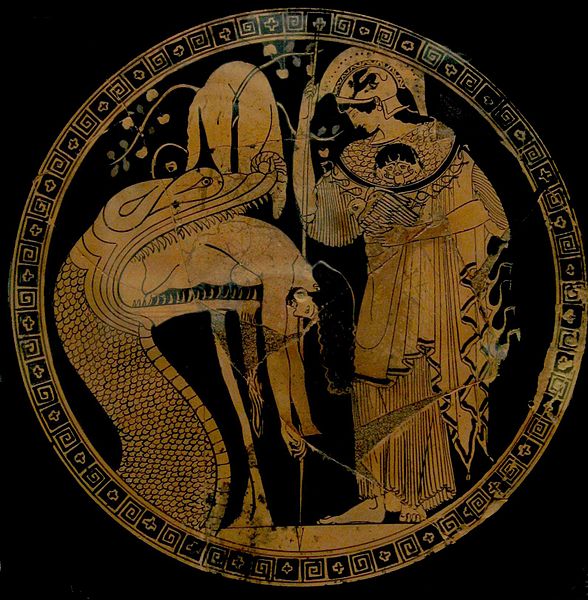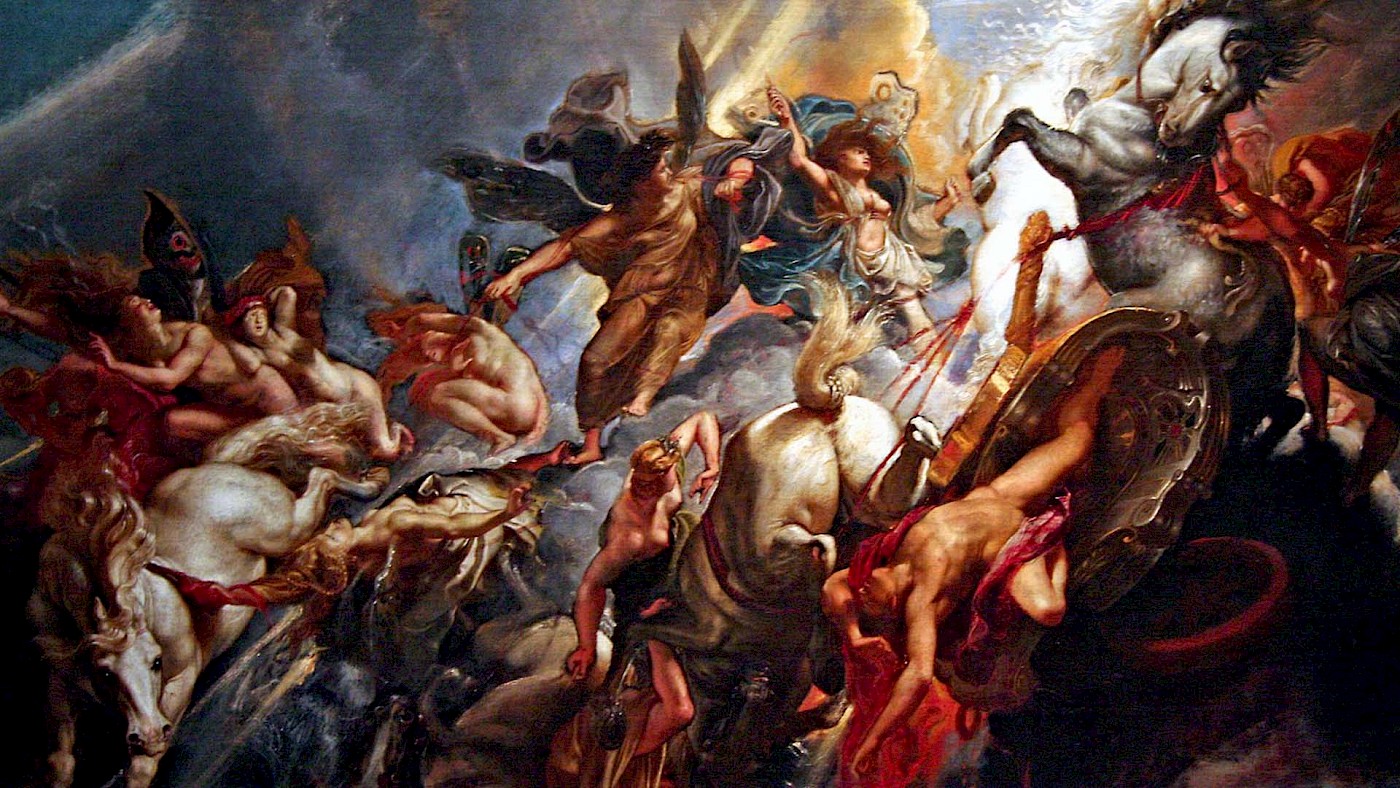Since 2006, I’ve regularly given courses and lectures on a variety of topics related to the ancient world for various institutions specialized in adult education. This month I’m giving a course on Greek mythology for two different organizations here in the Netherlands, in Leiden and in Bussum. I also wrote a book on the subject, in Dutch, that was published last year in Amsterdam.
Greek mythology, i.e. the totality of stories (mythoi) from ancient Greece, always draws a lot of interest. It served as a source of inspiration for a lot of (early) modern literature and art. It’s therefore of interest not only to those studying the ancient world, but also to art lovers in general.
My course usually consists of four sessions or classes of two hours each. The first class is devoted to a brief overview of ancient Greece from the Bronze Age down to the Classical age, the timespan during which the Greek myths were created, transmitted orally for some time, and finally written down. I also briefly deal with Greek myths about the creation of the world and the earliest gods, based largely on the Theogony by Hesiod. It always ends with the victory of the Olympian gods over the Titans.
The second class is entirely devoted to the Olympian gods, from Zeus and his brothers and sisters to the younger generation of gods, such as Ares, Athena, and Aphrodite. The third part deals with hero myths, such as the story of Perseus, Jason and the Argonauts, and the Theban Cycle (Cadmus, Oedipus, the Seven against Thebes). In Leiden, there’s an extra class devoted entirely to Heracles.
The final class is devoted to the Trojan War, based largely, of course, on Homer’s Iliad and Odyssey, with other information supplied by whatever scraps we have for other epic poems that were part of the Trojan Cycle. I usually stop with the return of Odysseus and avoid the whole messy bit where he gets killed, as many of these stories are usually not the most upbeat of tales, adventurous though they may be.
Mythology as history
This arrangement in four (or five) sessions is not random, but chronological: for the ancient Greeks, most myths were indeed historical. Hesiod proposed five stages in human development, which started with the Golden Age and, passing through the Silver, Bronze, and Heroic Ages, ended with the Iron Age, which he thought was the period in which he himself lived. The Iron Age, he wrote, was a wretched time, in which people had to suffer and work hard.
Hesiod made a distinction between the warlike Bronze Age and the Heroic Age that originally perhaps didn’t exist. Certainly, the Roman poet Ovid later proposed a simpler scheme of four metal ages (Gold, Silver, Bronze, and Iron), in which the Bronze Age was synonymous with Hesiod’s Heroic Age. In any case, the Age of Heroes preceded what we consider to be Greek history proper: the adventures of Perseus and Bellerophon could be placed in this period, and the Trojan War provided the epic finale.
Hesiod’s Bronze and Iron Ages are obviously different from the archaeological Bronze and Iron Ages. However, already in Antiquity, the Trojan War was dated to somewhere around 1200 BC (sometimes earlier, sometimes later), which we currently believe to be the time that the archaeological Bronze Age came to an end in the Aegean. This looks like a wonderful coincidence – and it is. The ancient Greeks had no idea about the Three Age System used in archaeology, which is an invention of the nineteenth century that divides prehistory into a Stone, Bronze, and Iron Age.
It’s not entirely clear how widely spread Hesiod’s Five Ages of Man was. Hesiod was read widely in Antiquity and considered Homer’s equal, but there was no such thing as an ancient Greek religious canon. People were free to accept or reject whatever stories they wished, especially as far as the very distant past was concerned. Some aspects, though, were sacrosanct, and no ancient Greek doubted the veracity behind the stories of Thebes and Troy.
Indeed, when Herodotus wrote his Histories, he placed the Greco-Persian conflict in the context of tit-for-tat warfare between Greeks and ‘Asians’ dating back to the Trojan War (Paris’ abduction of Helen). He even delved further back into ‘history’ by citing Zeus’ abduction of the Phoenician girl Europa as an even earlier example of conflict between East and West.
The fragmented past
Starting the course with a potted history of the ancient Greek world from the Bronze Age onwards allows me to put the myths in their proper context. Mycenaean Linear B tablets have revealed the existence, for example, of many of the Olympian gods known from the age of the city-states, including deities once considered to have been late additions to the Greek pantheon, such as Dionysus and Ares.
One point that I always stress in my course is that the ancient material that has come down to us is just a tiny bit of what once existed: the past is preserved only in fragments, and we have to somehow piece enough of it back together in order to be able to reconstruct it. But much of the past has been lost forever. It’s like making a jigsaw puzzle where most of the pieces are missing and you have little or no clue as to what the final picture is supposed to look like.

An interesting example is the inside of a red-figure cup, shown above, which depictiswhat is presumably the hero Jason being regurgitated by a dragon. The goddess Athena, recognizable by her equipment such as the aegis, is placed opposite the dragon. The Golden Fleece can be seen suspended from the branches of the tree in the background.
This scene must be set in the garden guarded by a dragon of Ares in Colchis, but in none of the stories that have come down to us in written form do we read abgout Jason getting swallowed up by the dragon. That version of the tale is simply lost to us, with this cup offering a tantalizing glimpse as to the variety of Greek myths that once existed.
The fact that the past is an incomplete puzzle is one of the most interesting as well as one of the most frustrating aspects of studying the ancient world. At the same time, piecing together the past is also one of the most rewarding things you can do, even if finding gainful employment in this field is often just as challenging! But that’s a subject for another time.
